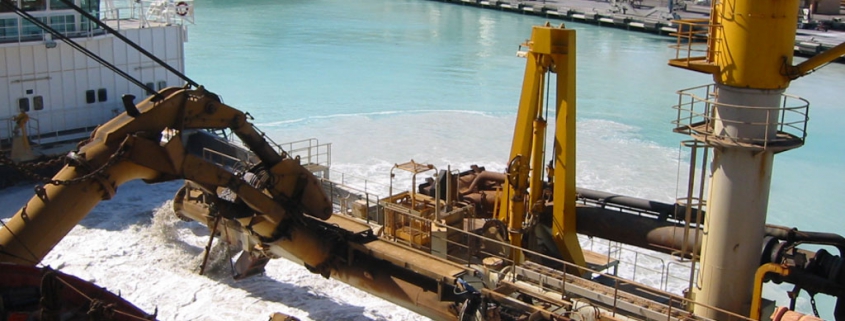Setting a new industry gold standard
Proponents of future infrastructure projects involving large-scale dredging will be encouraged to comply with new scientific guidelines in order to carry out their activities.
The Environmental Protection Authority’s Technical Guidance for the Environmental Impact Assessment of Marine Dredging Proposals has been revised and updated to include key scientific findings from WAMSI’s Dredging Science Node (DSN).
The revised technical guidance will improve the ability for industry to predict and manage the impacts of large-scale dredging on projects in Western Australia.
Dredging is a critical component of WA’s infrastructure and essential to the export of commodities, however until recently, there had been considerable uncertainty about the scale and intensity of potential impacts on the state’s marine environment.
This uncertainty has often meant lengthy delays in the approval and regulatory processes, amounting to significant costs for the proponents and the state, as well as costly monitoring and management regimes.
The guidance describes a framework that recognises this uncertainty and provides for the clear and consistent presentation of predicted dredging effects on benthic habitats caused by removal, light reduction or burial at the sites of dredging and disposal.
Science Lead Dr Ross Jones from AIMS, said the research outputs from the DSN represented a monumental change in the available information for dredging across the state and would greatly improve consideration of environmental impacts.
“The DSN significantly increased understanding of dredging pressures on marine benthic communities and the key findings, relating to tolerance thresholds of benthic organisms to dredging pressures and critical life cycle windows where organisms are likely to be more sensitive to those pressures, have been incorporated,” Dr Jones said.
Environmental Protection Authority Chairman Professor Matthew Tonts, said the DSN was an example of a demand-driven, science-regulator-industry collaborative approach to research that has been directly applied to improve the social, environmental and financial outcomes of major marine dredging activities.
“The revised Technical Guidance will be a valuable tool in the assessment and management of dredging programs in WA,” Professor Tonts said.
The Technical Guidance is complemented by the Guidelines on dredge plume modelling for environmental impact assessment, published by WAMSI.
It’s expected that the delivery of outcomes from the DSN, could be repeated in other important and emerging issues in marine science in WA, such as the fate of hydrocarbons in oil spills, aquaculture and sustainable fisheries management.

